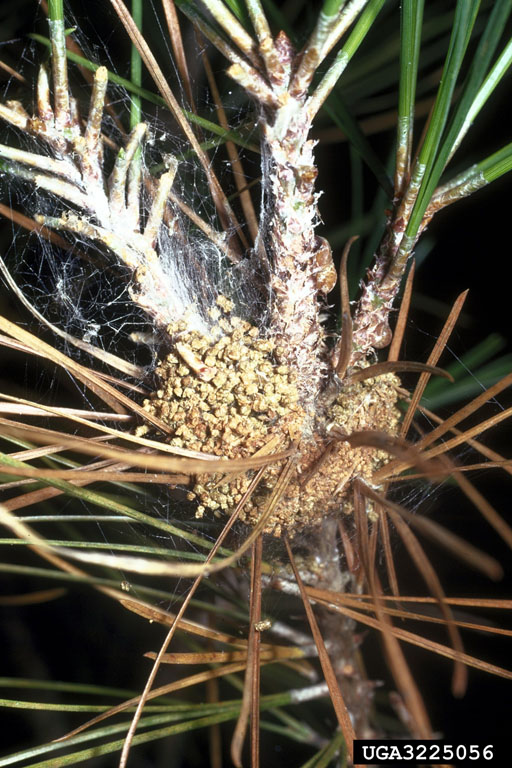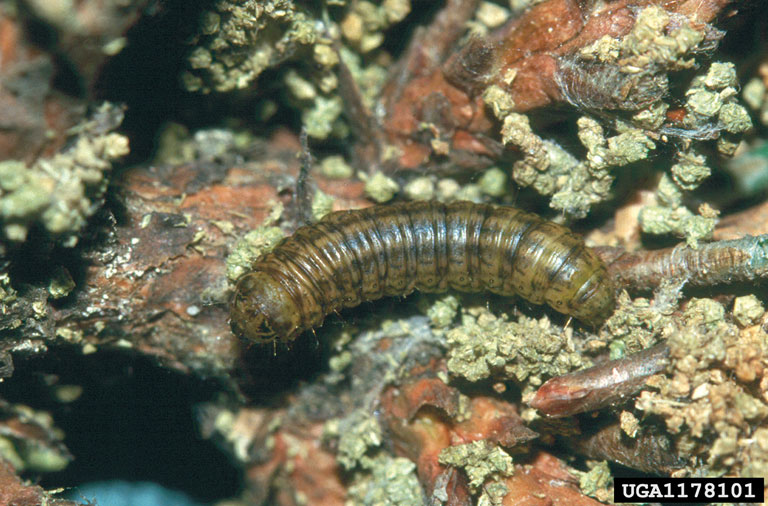Pine webworm, Tetralopha robustella, is a forest pest found throughout the eastern U.S., wherever pines grow. Its common name comes from the habit of the larvae. They weave clusters of pine needles together into a silken nest. These nests protect the larvae from many natural enemies.

In Texas, pine webworm frequently feeds on loblolly, shortleaf, slash, and longleaf pines. Often causing problems in young pine plantations where seedlings may die from complete defoliation. Pines grown for Christmas trees have a lower market value and are difficult to sell when they contain the webworm’s unsightly nests. In residential areas, they detract from the beauty of the trees.
Life cycle
One to three generations of pine webworm develop per year in East Texas. The adult form of the webworm is a moth, which appears in late spring but is seldom noticed due to their small size, about a one-inch wingspan, and nondescript color pattern. After mating, the female moth lays anywhere from one to over 20 eggs in single rows along the length of pine needles.

Upon hatching, groups of up to 75 young larvae wander among the needles, spinning silken threads. Each larva then bores into a needle and feeds on its insides. Once they have grown too large to feed inside individual needles, the larvae feed among the loosely webbed clumps of foliage.
During this process, the webbing is filled with brown, oblong fecal pellets. This mass of webbing and fecal pellets encloses the needles and can be two to five inches long.
Fully grown larvae are 3/4 inch long and are yellowish-brown with a dark brown stripe on each side of the body. When fully developed, larvae leave the tree and construct a silk cocoon in the soil where they remain through the winter.
Control

Natural enemies of pine webworm help keep populations at tolerable levels. These include several wasp parasites, a fly parasite, and some birds that tear open the nests to feed on larvae.
Often, pine webworm larvae complete feeding and vacate their nests before the damage is noticed. In this case, it is too late to apply any type of control measures.
If you do find webworm nests that contain larvae, the nests can be pruned from the tree and destroyed. If pruning is not feasible, effective chemical control can be achieved by spraying the foliage and nests with Dylox, methoxychlor, or Sevin. If reinfestation occurs, a second application in mid to late summer may be necessary.
Before using any pesticide, ensure that what you are about to use is currently registered for use on pine webworm by the U.S. Environmental Protection Agency and the Texas Department of Agriculture. Always read and carefully follow all application directions, cautionary statements, and other information appearing on the label.